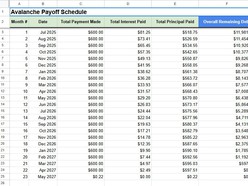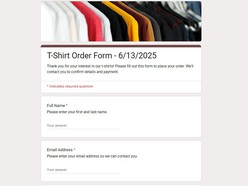Employee performance is essential for the success of any organization. However, sometimes employees can experience performance issues, which can lead to a decrease in productivity and overall business success. In such cases, a Performance Improvement Plan (PIP) can help employees get back on track and improve their performance.
Creating a Performance Improvement Plan from scratch can be a challenging and time-consuming process. However, finding a high-quality, free PIP template can be equally challenging. Many online templates are either of poor quality or are quite expensive, making it difficult for organizations to create effective PIPs.
Our Free Performance Improvement Plan Google Docs Template is a great solution that is available at no cost, helping organizations save time and resources while creating effective PIPs.
Frequently Asked Questions
When to Use a PIP?
A Performance Improvement Plan (PIP) is a tool used by employers to help employees improve their performance in areas where they may be struggling. A PIP is typically implemented when an employee is not meeting expectations or when there is a clear need for improvement. Here are some common situations where a PIP may be necessary:
Poor Performance: When an employee consistently fails to meet performance standards or does not perform tasks at the expected level, a PIP can help them to identify areas where improvement is needed.
Behavioral Issues: Employees who exhibit negative behaviors that impact their work or the work of others may require a PIP. For instance, if an employee has a poor attendance record or consistently fails to complete tasks on time, a PIP can help them to correct these issues.
New Hires: New employees who are struggling to adjust to the work environment or learn new skills may benefit from a PIP. This can help them to receive the support and feedback they need to improve their performance.
Promotions: When an employee is promoted to a new position, they may require additional support to perform their duties successfully. A PIP can help them to identify any skills gaps or areas where they need to improve to perform their new role effectively.
Career Development: Employees who are looking to advance their careers may require a PIP to identify areas where they need to develop their skills or gain experience to progress to the next level.
What steps for creating an effective PIP?
Creating an effective Performance Improvement Plan (PIP) requires careful planning and collaboration between employers and employees. Here are the steps for creating an effective PIP:
Identify the problem: The first step is to identify the performance issues that need to be addressed. Employers should be specific and clear about the areas of concern and identify why they need to be addressed.
Define expectations: Once the performance issues have been identified, employers need to set clear expectations for improvement. Employers should define specific goals and objectives that the employee needs to achieve within a set timeframe.
Involve the employee: Collaboration with the employee is essential for developing an effective PIP. Employers should work with the employee to define the expectations and goals outlined in the plan. This can help the employee to understand what is expected of them and gain ownership of their improvement.
Identify action steps: The next step is to identify specific action steps that the employee needs to take to improve their performance. The action steps should be clear, measurable, and achievable, and should help the employee to meet the expectations outlined in the plan.
Provide support: Employers need to provide the necessary support to help employee achieve their goals. This could include providing additional training, coaching, or mentoring. Employers should also be available to answer any questions or concerns the employee may have throughout the PIP process.
Monitor progress: Regular monitoring of the employee's progress is essential for determining if the PIP is effective. Employers should schedule regular check-ins to review the employee's progress and make adjustments to the plan as needed.
Review and follow-up: Once the PIP is completed, employers should review the results and determine if the employee has achieved the goals outlined in the plan. If the employee has met the goals, employers should recognize their achievements and provide ongoing support to maintain their performance. If the employee has not met the goals, employers should consider taking further action, such as additional training or coaching.
By following these steps, employers can develop an effective PIP that helps employees improve their performance and meet the expectations of the organization.










